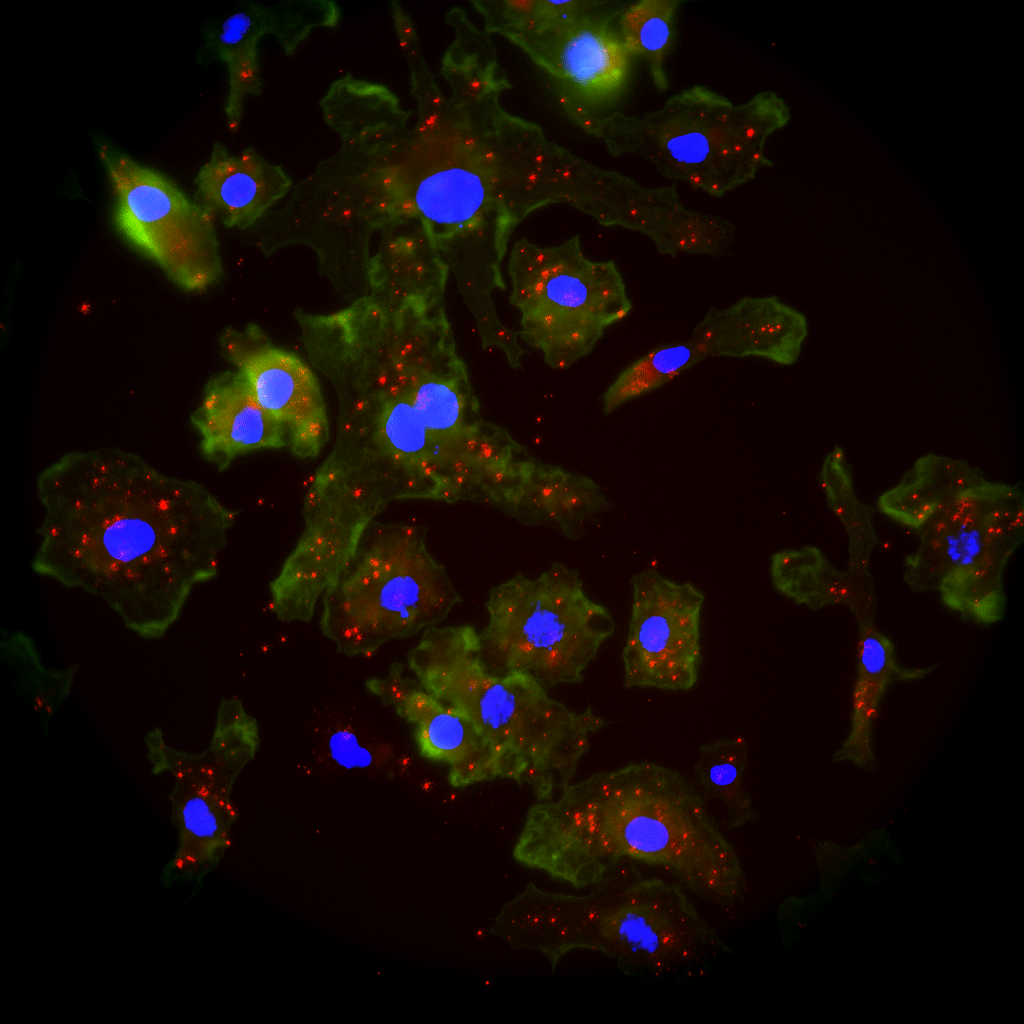Researchers investigate workings of antibody therapeutics

South Dakota BioSNTR researchers investigate how antibody therapeutics work
Written by Christie Delfanian, SDSU Marketing & Communications
Brookings, S.D. — Researchers from South Dakota State University and the University of South Dakota are investigating how antibodies protect the body from influenza through the state’s BioSystems Networks and Translational Research (BioSNTR) center.
What they learn will help Sioux Falls-based SAb Biotherapeutics (SAB) improve its influenza therapeutic and result in technologies that other biotechnology companies can use to evaluate product effectiveness. SAB’s immunotherapy platform was recognized by the World Health Organization as one of the top platforms for rapidly responding to infectious disease outbreaks.
BioSNTR provides infrastructure and support for biotechnology research and is funded through a South Dakota Experimental Program to Stimulate Competitive Research (SD EPSCoR) National Science Foundation RII Track 1 award.
“BioSNTR creates an opportunity to bring components of biomanufacturing—including antigen development—to the state of South Dakota,” said SAB president and CEO Eddie Sullivan. “BioSNTR scientists have the refined skills and advanced capabilities to help us develop laboratory tests to show that our antibodies are effective.”
Combatting viruses quickly
Unlike vaccines, antibody therapeutics can be developed quickly and used to rapidly eliminate the virus from an infected person’s body, explained cell biologist Adam Hoppe, BioSNTR director and associate professor at SDSU.
“Antibodies are only temporary, but sometimes temporary can be critical,” said SDSU virologist Feng Li. For those with weakened immune systems, such as the elderly, or those with immunosuppressive diseases, such as HIV, antibody therapeutics may be their only viable option.
Hoppe and virologist Feng Li, a professor in the biology and microbiology and veterinary and biomedical sciences departments, are working with immunologist/virologist Victor Huber, an associate professor at the Sanford School of Medicine of the University of South Dakota.
The collaborative project, which began in June 2015, looks at how the antibodies recognize their targets, activate immune cells and clear influenza from the body. Specifically, the researchers are developing and evaluating new ways to predict the efficacy of SAB’s influenza therapeutic.
“This allows us to work out the dynamics of the therapeutics,” Huber explained. That includes the timing and duration of the injections, as well as the dose needed to produce a protective response.
Huber, who has been doing influenza research since 1997, makes the influenza vaccines, which SAB then uses to generate the antibodies from which the therapeutics are made. He then utilizes a ferret model to test the effectiveness of the end product.
SAB and Huber performed initial trials on the company’s influenza therapeutic through a BioSNTR seed grant that helped them secure a Small Business Innovation Research Grant from the National Institutes of Health last fall.
Unraveling inner workings
“To be effective, the antibody must recognize the virus and then send the immune system to kill the virus,” explains Li, whose group uses a molecular approach to figure out where the antibody binds.
The surfaces of influenza virus particles have numerous copies of spike-like projections, known as antigens, which the antibodies recognize and adhere to, essentially marking them for destruction by the immune system. Two doctoral students and research assistant professor Dan Wang work with Li to map the specific antigen sites, which the antibodies target.
Because the vaccines used to produce the antibody therapeutics cover multiple strains, the number of antigens to which the antibodies bind indicates the range of the immune response. “Inducing a broad immune response will help make a better product,” said Huber, whose research focuses on understanding host antibody responses that are associated with vaccine-induced protection against influenza viruses.
Hoppe’s group focuses on what’s happening at the cell level—how the immune system recognizes the antibodies attached to the virus and then clears the virus from the body. One doctoral student and one postdoctoral researcher are working on this project.
Immune cells, such as macrophages and dendritic cells, have Fc-gamma receptors that recognize the antibodies attached to the virus. The macrophages and other specialized immune cells then ingest and destroy the virus.
In addition, the virus also invades body cells and begins producing more virus. When that happens, the viral proteins, or antigens, appear on the cell surface, Hoppe explained. Antibodies detect these and attach to the infected cells. Through the Fc-gamma receptors, the macrophages and natural killer cells recognize the attached antibody and kill the infected cells.
To understand how the immune cells clear the antibody-coated viruses and antibody-recognized infected cells from the body, Hoppe said, “We develop assays to measure how well the antibody mediates this clearance process.”
As part of the BioSNTR team, Huber and his lab work on the whole antibody in relationship to the Fc-gamma receptors.
Though antibody recognition is diverse, Huber noted, “There are only a handful of ways the host eliminates pathogens. We are looking for ways to optimize those interactions to clear the infection more rapidly, especially in the case of a severely infected individual.”
[button link=”https://www.sdstate.edu/sites/default/files/2017-04/AD248%20SDSU%20Research%20Report%20SpringWeb%2017_1.pdf” color=”default”]View full article[/button]

 National Science Foundation RII Track-1 Project:Expanding Research, Education and Innovation in South Dakota
National Science Foundation RII Track-1 Project:Expanding Research, Education and Innovation in South Dakota